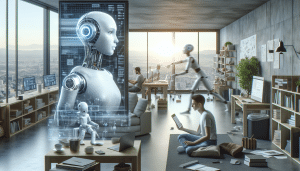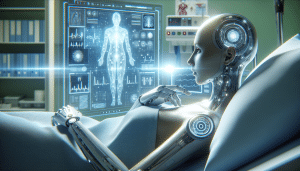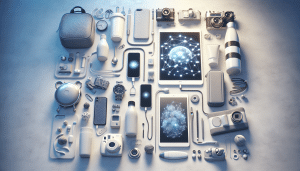Smart Homes Decoded Will You Benefit from Automation
Oliver Cooper October 13, 2025
Curious about smart homes? This guide unpacks the essentials of home automation, from smart devices to security and energy savings. Explore how connected living can influence daily routines and what to know before diving in.
Understanding the Foundations of Smart Home Technology
Smart home technology refers to interconnected devices and systems that streamline management of domestic environments. Think lights, thermostats, security systems, appliances, and music all controllable with a phone or tablet. Modern home automation systems rely on wireless communication, sensors, and artificial intelligence to optimize comfort and efficiency. The goal is to provide users with seamless control and customization over their living spaces, freeing up time and reducing manual chores through automation. The integration of smart home devices is making daily life easier and more adaptable for a growing number of households.
The fundamental building blocks of smart home ecosystems are platforms like Google Home, Amazon Alexa, and Apple HomeKit, which facilitate communication between various brands and product categories. These platforms act as central hubs, allowing different devices to interact even if they come from distinct manufacturers. Homeowners can use these systems to set routines, such as turning off lights at bedtime or adjusting the thermostat when leaving for work. The ecosystem’s versatility is driving widespread adoption, with more families turning to connected technology to enhance lifestyle and manage energy use effectively.
A key aspect of smart home technology is interoperability. Many people want their devices to communicate effortlessly, and industry standards like Zigbee, Z-Wave, and Matter strive to solve this challenge. As compatibility improves, users can mix and match devices from various brands with greater ease. Analysts predict further advancements will emerge, making smart tech more accessible and reliable. By focusing on open standards and integration, today’s smart home systems offer flexibility while opening the door for future innovations in automation, personalized comfort, and efficient device management (https://www.nist.gov/itl/ssd/smart-connected-systems).
Key Smart Devices to Consider in Connected Living
Smart speakers such as Google Nest or Amazon Echo are often the entry point to home automation. They act as personal assistants, responding to voice commands to play music, answer questions, control other smart devices, or provide reminders. These devices offer convenience, especially when hands are full or when quick access is needed. Many users appreciate the ability to set alarms, check the weather, and manage shopping lists by simply speaking.
Smart lighting has transformed how people interact with their living environments. Bulbs like Philips Hue or LIFX enable personalized mood settings, scheduling, and remote management via smartphone apps. Users find it easy to set routines for energy efficiency, create ambiance, or simulate occupancy when away from home. Some advanced models even change color to match circadian rhythms, contributing to well-being by promoting better sleep or alertness depending on the time of day.
Thermostats are another major player in connected living. Smart thermostats such as Google Nest or ecobee automatically learn usage patterns, manage heating and cooling systems intelligently, and often result in significant energy savings. With features like geofencing and adaptive schedules, they adjust temperature based on whether anyone is home. Homeowners can monitor energy consumption and make real-time adjustments from anywhere, providing a blend of convenience and cost-effectiveness (https://www.energy.gov/energysaver/save-electricity-and-fuel/lighting-choices-save-you-money/smart-lighting).
Security and Privacy in the Age of Automated Homes
Security is top-of-mind for many exploring home automation. Smart security devices—cameras, motion detectors, video doorbells, and smart locks—offer homeowners peace of mind. These devices send real-time alerts, record video footage, and allow users to control access remotely. Integration with mobile apps means homeowners can monitor and respond to concerns from virtually anywhere, ensuring property and personal security remain priorities.
However, increased connectivity carries responsibility. Users must remain aware of privacy implications—unauthorized access, data breaches, and surveillance concerns are real. Reputable brands often implement encrypted communication and frequent security updates to reduce risks. Changing default passwords, enabling two-factor authentication, and monitoring permissions given to third-party apps are proactive ways to help guard personal information (https://consumer.ftc.gov/articles/how-secure-your-home-when-you-use-smart-devices).
Smart device manufacturers and regulatory agencies are also responding with new standards and best practices. The focus is on transparent policies, privacy-by-design, and giving users more control over their data. Certification programs and user education further support safer connected living. Understanding privacy settings and staying updated on device firmware ensures homeowners keep pace with evolving security practices in the smart home sector (https://www.cisa.gov/news-events/news/smart-home-devices-tips-better-security).
How Smart Home Automation Can Impact Energy Efficiency
Home automation is increasingly associated with energy savings. Smart systems can monitor and automate heating, cooling, and lighting based on occupancy and user preferences, which reduces waste. For example, sensors detect empty rooms and power down devices or dim lights automatically. Many users report lower utility bills after implementing automation, making it both a convenience and a cost-management tool.
Smart plugs play a key role in managing appliance usage. They enable remote power cycling of electronics, scheduling usage, or shutting off vampire power drains. By gathering data on consumption, smart plugs empower users to identify and curb inefficient habits. Integrating these with energy dashboards offers an at-a-glance look at household trends, supporting more sustainable choices that align with environmental awareness.
Some utility companies have partnered with smart home platform providers to enable demand response programs. This means certain appliances or systems can adjust usage during peak demand periods, helping to stabilize the grid and potentially offering rebates. As climate policy and tech advances intersect, smart home automation serves as a pathway to greener, more adaptable living, supporting both personal and community energy goals (https://www.energy.gov/eere/buildings/articles/how-smart-energy-management-systems-can-reduce-building-carbon-emissions).
Weighing the Pros and Cons of Connected Living
Every innovation introduces trade-offs. While the allure of automation appeals to many, it’s important to evaluate how connected living fits individual needs and household dynamics. Benefits include time savings, ease of multitasking, and improved oversight of daily routines. Smart devices often integrate with accessibility features, making homes more inclusive for people with disabilities or seniors who need extra support.
Initial costs, setup complexity, and the learning curve may be barriers for some. Interoperability and updates also present challenges if devices from different brands operate on separate protocols. The need for reliable internet connectivity, occasional technical troubleshooting, and device maintenance are factors to consider. For renters or those in shared housing, investment and control over infrastructure may be limited, impacting long-term commitment to smart tech adoption.
It is wise for consumers to start small, integrating devices with the greatest expected benefit and expanding as comfort and understanding grow. Reading independent reviews, consulting trusted guides, and keeping up with product support can help avoid pitfalls. As the smart home sector matures, more intuitive interfaces, standardized connectivity, and user-centric design should streamline adoption. For many, the decision to automate depends on lifestyle goals, privacy priorities, and an ongoing assessment of comfort versus complexity (https://www.npr.org/2023/02/21/1158573217/smart-home-technology).
References
1. National Institute of Standards and Technology. (n.d.). Smart Connected Systems. Retrieved from https://www.nist.gov/itl/ssd/smart-connected-systems
2. U.S. Department of Energy. (n.d.). Smart Lighting. Retrieved from https://www.energy.gov/energysaver/save-electricity-and-fuel/lighting-choices-save-you-money/smart-lighting
3. Federal Trade Commission. (2023). How to Secure Your Home When You Use Smart Devices. Retrieved from https://consumer.ftc.gov/articles/how-secure-your-home-when-you-use-smart-devices
4. Cybersecurity & Infrastructure Security Agency. (2023). Smart Home Devices: Tips for Better Security. Retrieved from https://www.cisa.gov/news-events/news/smart-home-devices-tips-better-security
5. U.S. Department of Energy. (2022). How Smart Energy Management Systems Can Reduce Building Carbon Emissions. Retrieved from https://www.energy.gov/eere/buildings/articles/how-smart-energy-management-systems-can-reduce-building-carbon-emissions
6. NPR. (2023). Smarten Up: What You Need to Know About Smart Home Technology. Retrieved from https://www.npr.org/2023/02/21/1158573217/smart-home-technology







